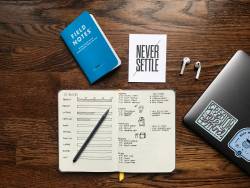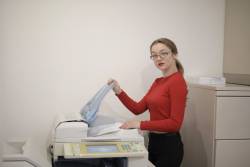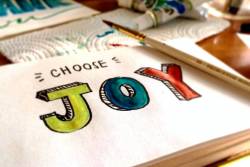
Personal Cash Flow Statements: How Do They Work?

When it comes to managing your finances and building financial stability, personal cash flow statements are one of the most important tools you can use to create awareness in your spending habits.
The term “cash flow” simply means the amount of money going in or coming out of your bank account over a period of time. Having a positive cash flow means the amount in your account is increasing over time, whereas having a negative cash flow means it’s decreasing.
In order to have a steadily growing number in your account, you’ll need to create a positive cash flow; bringing in more money than you’re spending.
But apart from keeping track of your finances, how does having a positive or a negative cash flow affect your life?
Having a positive cash flow means that there’s more money going into your account than there is leaving it. The greater your positive cash flow, the bigger the gap is between your income and your spending. This means that if you make no major changes to your lifestyle, over time you’ll begin to accumulate wealth.
On the other hand, if you have a negative cash flow, you’re spending more than you’re bringing in. This steady trickle of money out of your account puts you on the path to financial ruin. If you recognize that you have a negative cash flow, even though there might not be any imminent problems, it’s a red flag that you’re heading for financial troubles further down the line unless you change something.
How can you prepare your own personal cash flow statement?
Being conscious of your earnings and spending is essential when preparing a cash flow statement. Over the course of a month, track every dollar that enters and leaves your account, whether it’s paying the electricity bill or getting money back from a friend.
To see where exactly your money is going, you can split your income and expenses into categories:
+ $4,000 – Paycheques
- $500 – Food
- $350 – Utilities
- $1,000 – Mortgage payments
- $300 – Entertainment
- $300 – Car maintenance
- $50 – Credit card interest
- $200 – Insurance
- $300 – Miscellaneous
Total: + $1,000
This is an example of a positive cash flow where the person saved $1,000 which can be put away for the future or spent on other things. No matter what the person uses this money for, they are heading in a positive direction and accumulating more money than they are spending.
However, bear in mind it’s unlikely that all your months will bring in a positive cash flow. There are always unexpected expenses, emergencies, family vacations, and other bumps in the road that can result in a negative cash flow.
This is why creating cash flow statements over a longer period of time – over the course of a year, or many years – can help you get a more accurate picture of your finances. You’ll be able to see how much you are spending on unforeseen expenses and even be able to predict how much you’ll spend in the future, should your lifestyle remain the same.
Apart from getting a better sense of your income and spending, what else can cash flow statements be used for?
Cash flows help you set realistic financial goals
Are you hoping to pay off your student loan this year? Or maybe it’s your mortgage payments that you want to eliminate ASAP? Being aware of your cash flow can show you whether it’s possible to get a head start on paying off any loans that are weighing you down.
Instead of striving to always have a positive cash flow, paying off a little extra mortgage each month will eliminate the mortgage payments sooner, even if it leaves you with a neutral cash flow for a while.
Cash flows show you where you can save money
Being aware of what you’re spending your hard-earned income on can be just the catalyst you need to start cutting back on your spending and making wiser decisions financial decisions. Often, we don’t realize how much we are splashing out on unnecessary things until we see the sum of money laid out before us.
Knowing you’re spending $300 on entertainment each month will make you think twice about whether you need all those TV and online subscriptions.
Cash flows can help you make major life decisions
If you have a positive cash flow of +$1,000 each month, that means that there is room for making life changes without worrying too much about your finances.
Having a positive flow can help you determine whether a major career change makes sense, for example switching to a less stressful job that pays a little less. If you keep your lifestyle expenses the same, you’ll still have a positive cash flow while eliminating unnecessary stress in your life.
Cash flows make you prioritize your financial choices
A personal cash flow statement can jump you from inactivity into taking action and regaining control of your finances. Whether that’s decreasing your monthly spending or increasing your income, being aware of your money habits is sure to lead to action. Repaying your debts becomes a priority, as once eliminated, there’ll be one less monthly drain on your finances. Improving your career becomes a possibility as you know you’ll be sound financially.
Both of these actions, in the long run, lead to an increased positive cash flow.
Cash flows allow you to create a budgeting plan
If you’re planning on making a big investment, buying a new house, or paying college tuition fees, budgeting for such an expense is essential. Using your cash flow to create a budgeting plan will help you see how much you can put away each month and how long you’ll have to save instead of relying on loans at the last minute. This can save you both hassle and unforeseen expenses and give you a sense of financial security.
Conclusion
It’s important to remember that while cash flows are great indicators of your financial situation, they are not the be-all and end-all of everything. They’re usually more or less accurate, but there will always be bumps and blips to consider; unexpected expenses that will throw your cash flow off balance.
A personal cash flow statement is just a tool to give you an overview of your income and spending over time. And the more tools you’re able to use, the more likely you are to make the right financial decisions and reach your financial goals.













